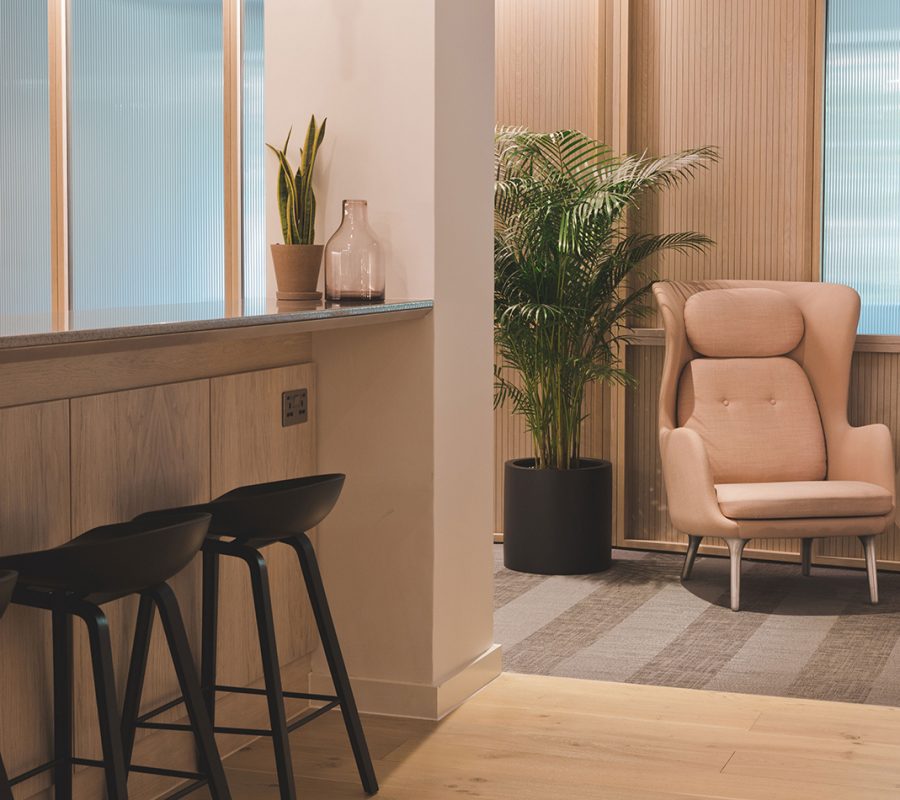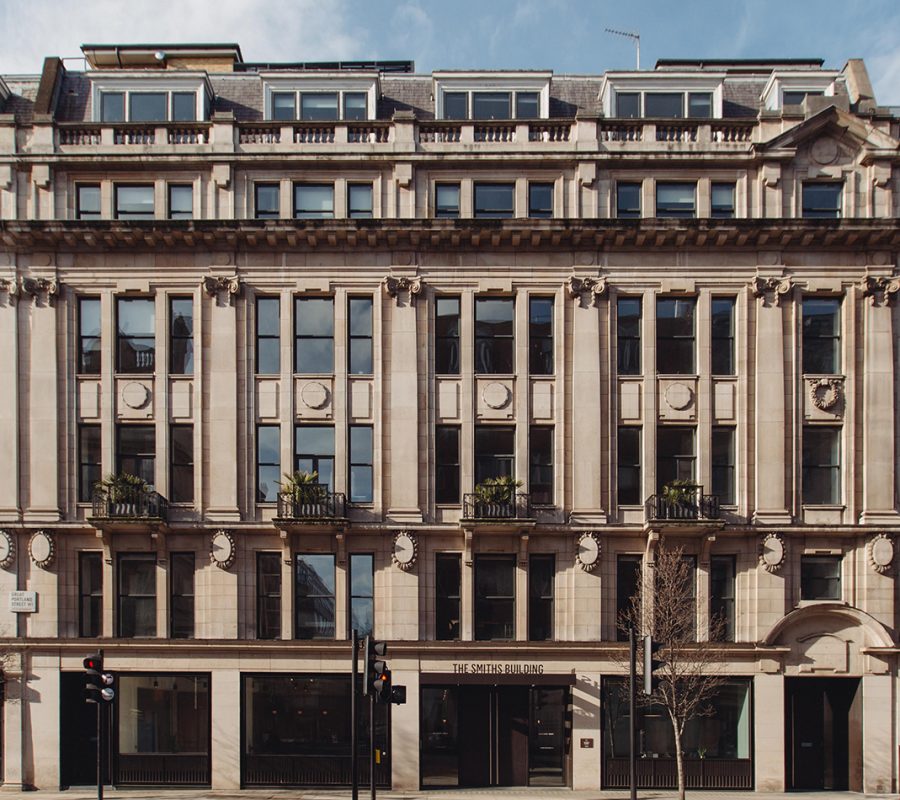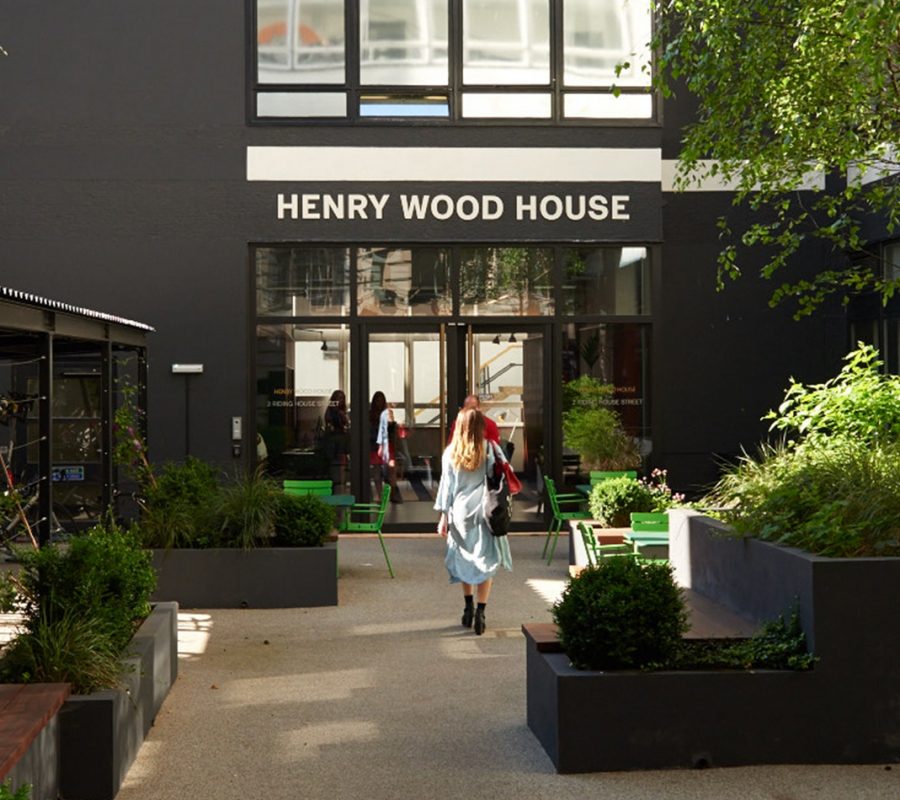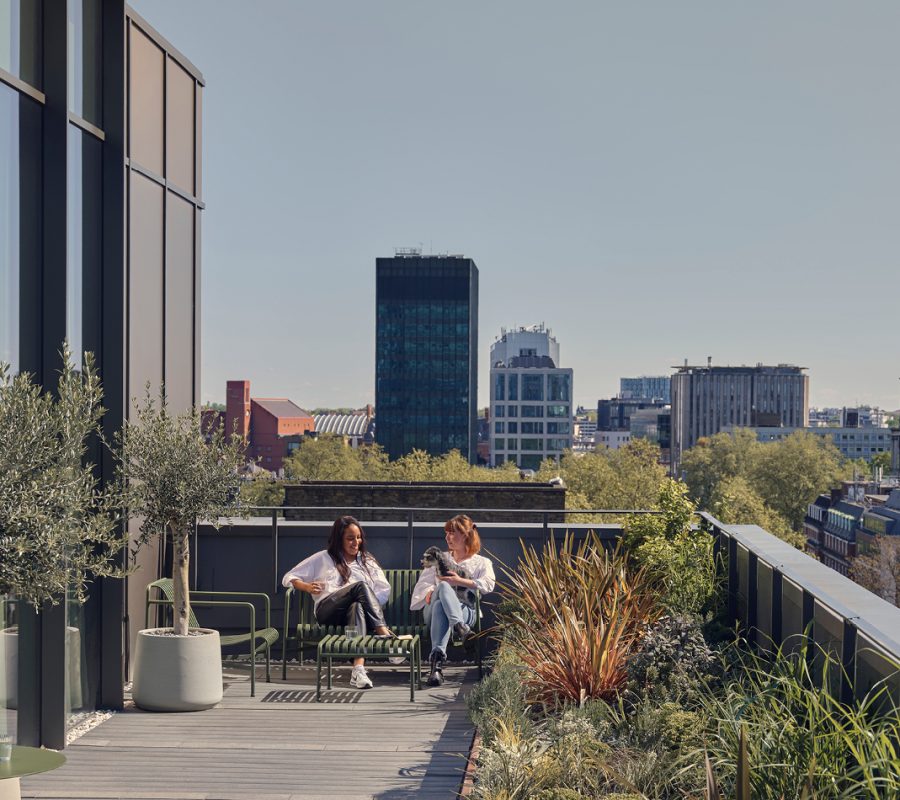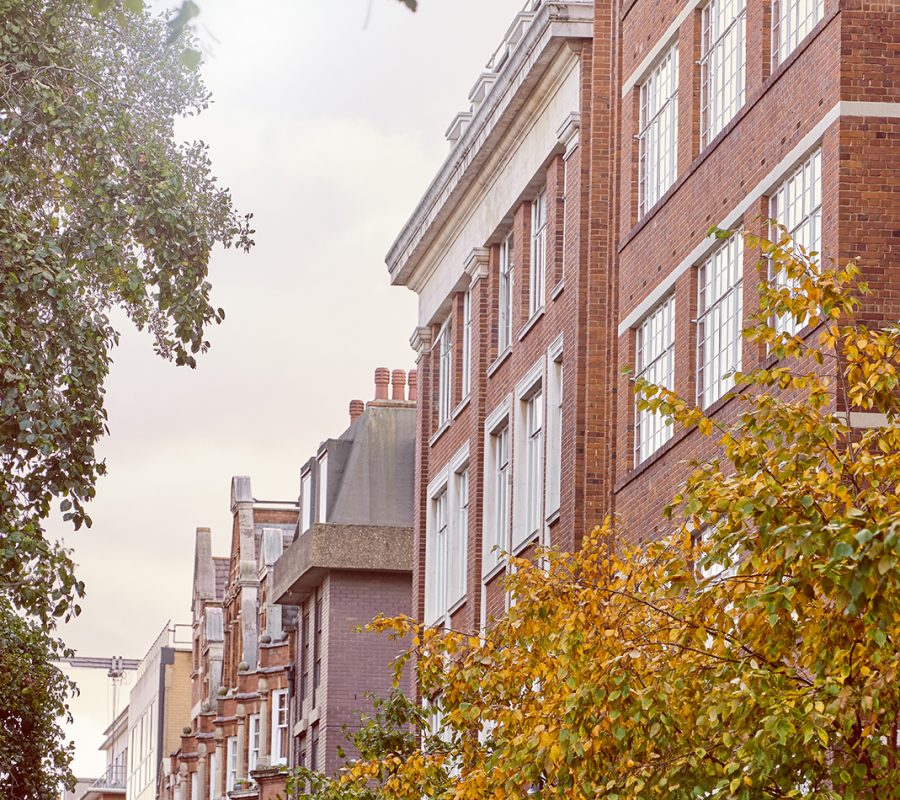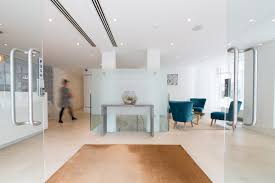Location:Fitzrovia
Fitzrovia Office Space
Office space in Fitzrovia is chosen by an eclectic variety of well-informed businesses and organisations that enjoy the proximity to the plethora of amenities offered by the West End yet within a relatively quiet Central London enclave.
From afar, one would be forgiven for believing that the BT Tower, which opened in 1966 and was at the time the tallest building in London, would set the tone for the use and architecture of the office space in Fitzrovia.
However, the influx of media organisations between 1970 and 1990 created a creative and cultural identity for the district.
One of the highest-profile creative entities renting office space in Fitzrovia is the multinational communications and advertising agency network Saatchi & Saatchi, which occupied space at 80 Charlotte Street for four decades. On leaving for new premises in 2017, they took with them reminders of their much-loved building, including their welcome stone step incorporating their motto ‘Nothing is Impossible’, and their in-house pub, The Pregnant Man, named after their much-celebrated 1970 campaign for the Family Planning Association.
Other advertising, film, media and television companies followed suit, and Fitzrovia boasts an impressive roster of past and present occupiers, including CNN Europe, MTV Networks Europe, and Nickelodeon. ITN was based on Mortimer Street and Wells Street, and Channel 4 was based on Charlotte Street. Talkback Thames is based on Newman Street and Stephen Street, Dennis Publishing on Cleveland Street, and London’s Time Out magazine and City Guide on Tottenham Court Road.
Meta also took space at One Rathbone Square, and Netflix’s London offices are at 30 Berners Street.
Fitzrovia is also home to art galleries and dealers, as well as foreign embassies. The district offers a plethora of amenities and facilities, including bars, cafes, shops, restaurants, and world-class hotels such as The Mandrake and Sanderson.
It is also very close to the amenities of its neighbouring Central London districts, including Bloomsbury, Marylebone, Mayfair, and Soho.
The eastern part of Fitzrovia is in the London Borough of Camden, and the western part is in the City of Westminster, which is part of the West End Ward.
Although Fitzrovia has never been an administrative unit, its somewhat grid-like pattern of local streets has lent itself to informal quadrangular definitions rather than formal boundaries, with Euston Road to the north, Oxford Street to the south and Great Portland Street to the west.
It is one of the most central office submarkets in London and one of the best-connected, benefitting from five underground stations within a 10-minute walk of its centre: Goodge Street, Great Portland Street, Warren Street, Oxford Circus, and Tottenham Court Road, the latter being served by the new Elizabeth Line.
The origin of the district’s name is somewhat debated – it is named after either Fitzroy Square or Fitzroy Tavern, a public house on the corner of Charlotte Street and Windmill Street frequented by George Orwell, Dylan Thomas, and Quentin Crisp.
It is agreed, however, that the name Fitzroy comes from the landowner who developed the area.
Fitzroy is Norman-French for ‘son of the king’ and was the name given to the illegitimate son of Charles II and Barbara Villiers, Henry (1663–1690), who was the 1st Duke of Grafton.
His heir, Charles Fitzroy (1683 – 1757) purchased the Manor of Tottenham Court and built Fitzroy Square, to which he gave his name and nearby Fitzroy Street. Grafton Street in Dublin is also named after him.
The name Fitzrovia came into use in the late 1930s among the artistic, bohemian circle, including writers Virginia Woolf, George Bernard Shaw, and Arthur Rimbaud, who were among the Fitzroy Tavern’s patrons. The name was first recorded in print by Tom Driberg MP in the William Hickey gossip column of the Daily Express in 1940.
Today, businesses and organisations can rent high-end office space in Fitzrovia, such as the offices on Great Titchfield Street, Margaret Street and Stephen Street.
In contrast to office space for rent on long-term leases, these offer flexible solutions, including private serviced offices, managed office suites and floors and co-working spaces.
These are held on short-term licences, with the option to extend and allow businesses to move into larger spaces as their business grows.
For added efficiency, the offices offer all-inclusive pricing. One monthly fee covers rent, utilities, furnishings, cleaning, secure enterprise-grade IT, and various other items such as reception, business support, and concierge services.
The premium workspace options are best-in-class and ESG-considered. They offer five-star amenities such as coffee bars, lounges, relaxation rooms, and shower facilities.

